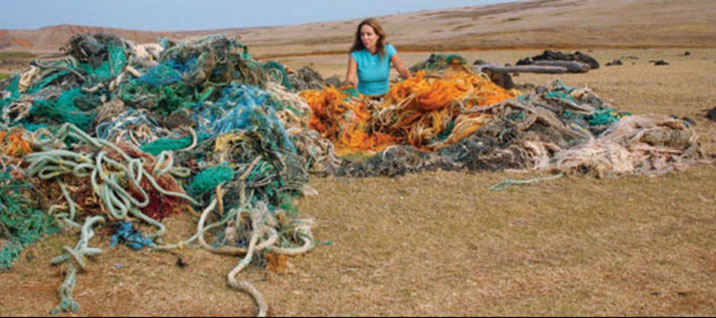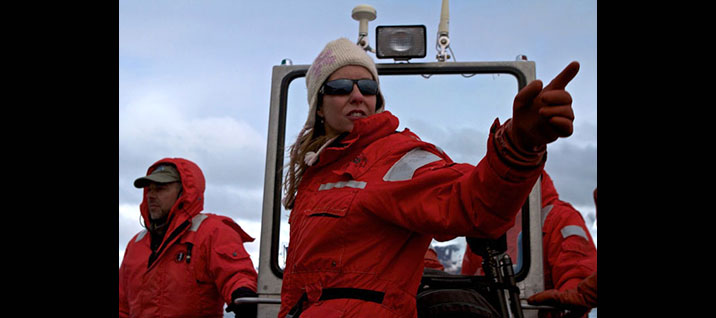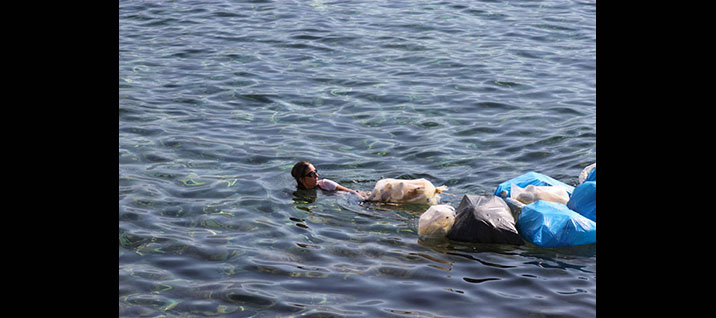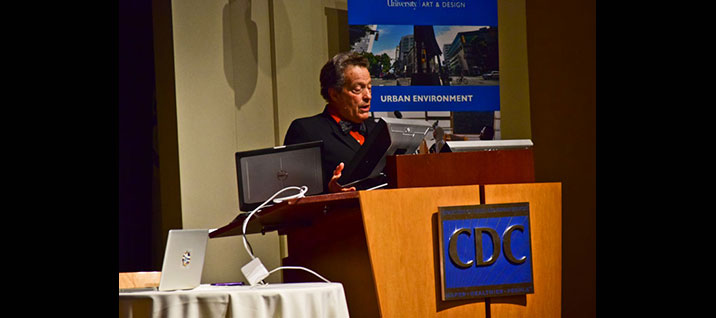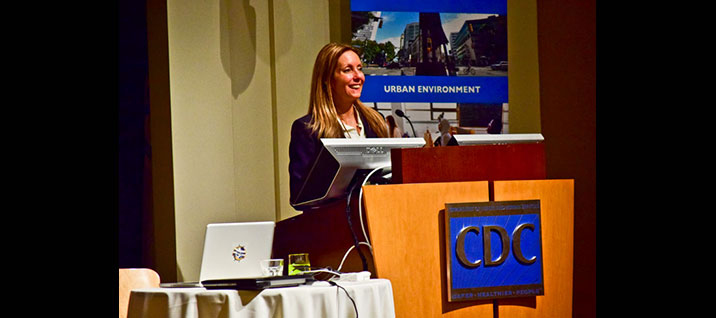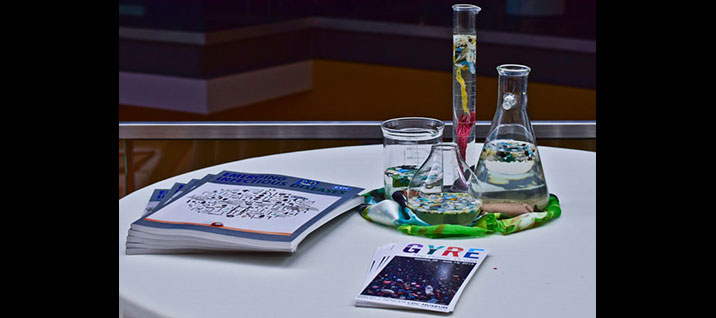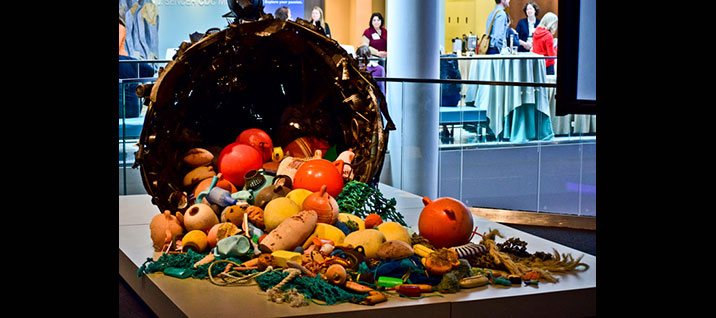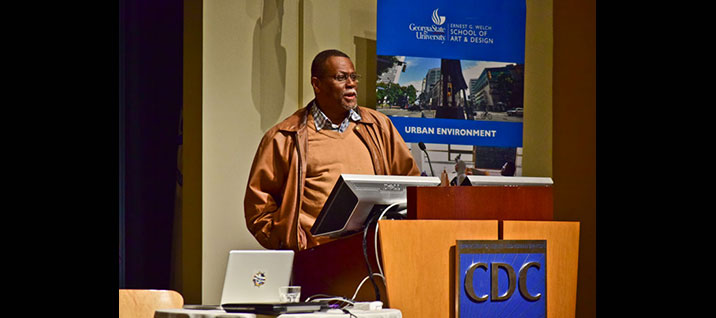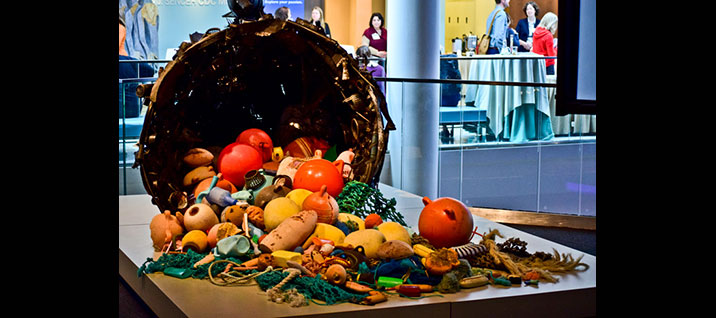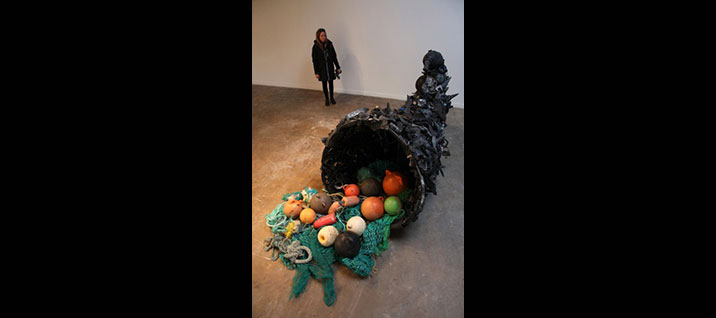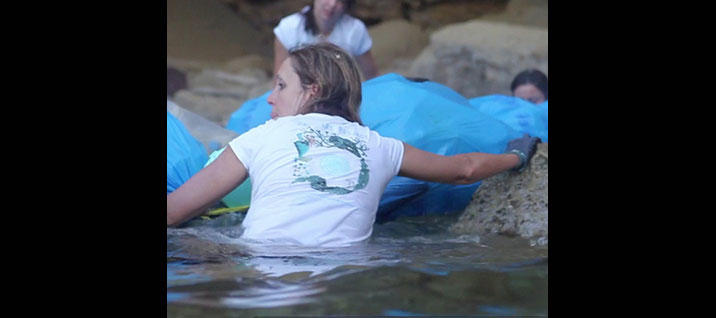CDC Plastic Gyre Symposium brings together scientists, artists and activists to address the "problem of plastic"
In March, Georgia State University and the CDC’s David J. Sencer Museum hosted the first ever interdisciplinary symposium on plastic pollution “The Plastic Gyre: Artists, Scientists, and Activists Respond.” The conference brought together scientists, artists and activists to focus on an issue that is a threat to natural environments and quality of life globally.
Emory MDP student Paulita Bennett-Martin (MDP ‘16) worked closely with symposium organizer Pam Longobardi to plan the event. Longobardi is a Georgia State University (GSU) Distinguished University Professor, Professor of Art and founder of the Drifters Project. Bennett-Martin’s master’s thesis research at GSU led her to coastal Belize, where she tracked spatiotemporal trends in the spread of marine debris through small towns and villages. This summer, as part of her MDP summer field practicum, Bennett-Martin will return to Belize, where she will collaborate with Longobardi to reduce plastic pollution.
“The opportunity to be involved in this conference was wonderful,” said Bennett-Martin. The 2-day conference included presentations from scientists, filmmakers, and artists from all over the world, including Charles J. Moore, who discovered the Great Pacific Garbage Patch, an area of the Pacific Ocean strewn with floating plastic debris which is twice the size of Texas; National Geographic filmmaker JJ Kelly; and Emily Saliers of the Indigo Girls.
Bennett-Martin sat down with conference organizer Pam Longobardi, to talk about the symposium, her work and the problem of plastic.
Do you feel Atlanta has a particular role to play in addressing the problem of plastic pollution?
The South has my attention because the South Point of the Big Island of Hawaii is where I first discovered the massive upwelling of plastic coming out of the ocean in 2006. Atlanta is one of the major cities of the Global South. Atlanta is the home of Delta, CNN, Turner Broadcasting and Coca-Cola, the Centers for Disease Control and Prevention, Emory’s Distinguished Scholar the Dalai Lama and the Drepung Loseling Tibetan Monastery, along with major universities and an important contemporary art journal called Art Papers. … All of these things make this the place for a major event that can awaken us to the cost of casual plastic use. The CDC is hosting a major international art exhibition on plastic pollution, and I wanted to grab this opportunity to have a major, interdisciplinary discussion on the true cost of plastic.
On her experience participating in the Alaskan Gyre Expedition in 2010-2011...
It was amazing to see the scale of Alaska for the first time. Space and distance warp into a new reality when you experience a two-hour open hulled boat ride to a small island of Resurrection Bay and see that this is just one wrinkle on a map of the shore of an immense scale that is Alaska. ... Its extremeness invokes awe for the creatures and humans that live here. It is very far away from the rest of the U.S., and much of the globe, and yet is getting pounded with plastic day after day, year after year: sake bottles from Japan, Chinese distilled water jugs, face cream jars from Costa Rica, buoys floats, flip flops, Nestle lids — which are everywhere — are all things I found in 2010-11. And that was before the tsunami debris [from the 2011 Japanese tsunami] which is also now there. Where my original site in Hawaii represents paradise, Alaska stands for wilderness. Both of these places are drastically altered by humanity’s plastic waste.
Plastic is a huge component of your work, and your art expresses a sense of darkness and urgency. How do you hope this influences the public?
I think we have to acknowledge and call out plastic’s origin in oil. We are going to the most extreme places to get the last drops of oil extracted from earth — in itself causing great destruction like the BP disaster [in the Gulf of Mexico in 2010] — and then forever locking it up in these toxic plastic objects that are coming back to haunt both us and the natural world: inside our bodies and the bodies of sea and land creatures, on the beaches of the world and the bloodstream of most humans.
How did this happen while we weren’t paying attention? The ocean has been communicating with us to PAY ATTENTION and for me that message comes extremely clearly with the poetic and mysterious plastic objects I encounter.
Given the complex nature of plastics (and trash in general), and the presence of these materials in the sea and other natural environments, what solutions do you hope to see in the future? How should we be addressing this issue?
First and foremost, the decommissioning of the idea of ‘disposable’ plastic. Its oxymoronic. Everyday each person makes dozens of decisions either towards or away from single use plastic. We cannot stay ahead of the tsunami of plastic through the endless cleanups [that remove plastic and other debris from oceans, beaches and other natural landscapes], of which I am a proponent. [These cleanups] are part of my artistic practice and physically remove harmful material from creatures‘ homes. We have to stop the thoughtless use of plastic, what I like to call “the misuse of plastic.”
Pam on other current and future Drifters Projects:
The Drifters Project and Plastic Pollution Coalition join forces with 5GYRES for a Youth Conservation Summit in the Bahamas in June. A Plastic Free Island – Export, the first external incarnation of Plastic Free Island model, will begin in Belize as a cooperation between Drifters Project, Emory Master’s in Development Practice graduate student Paulita Bennett-Martin, and the Oceanic Society, the oldest conservation ecotourism NGO in the U.S.

